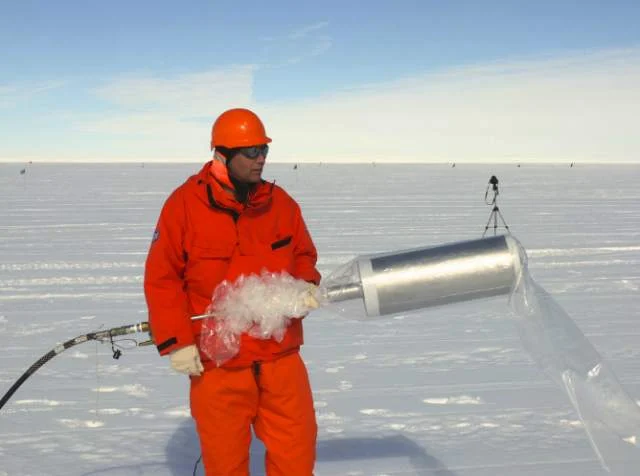A team of scientists recently launched 20 balloons during a campaign in Antarctica to study a space weather phenomenon, during which electrons stream down toward the poles from two gigantic donuts of radiation, the Van Allen Belts, which surround Earth.
The NASA-funded mission is called BARREL for Balloon Array for Radiation belt Relativistic Electron Losses and this slide show offers a glimpse of their work under the bright Antarctic sun.

In Antarctica in January, 2013 – the summer at the South Pole – scientists released 20 balloons, each eight stories tall, into the air to help answer an enduring space weather question: when the giant radiation belts surrounding Earth lose material, where do the extra particles actually go?
The NASA-funded mission is called BARREL for Balloon Array for Radiation-belt Relativistic Electron Losses and is led by physicist Robyn Millan of Dartmouth College in Hanover, N.H. During this month of bright, sunny days, the BARREL team launched a balloon every day or two into the circumpolar winds that circulate around the pole.
Each balloon floated for anywhere from three to 40 days, measuring X-rays produced by fast-moving electrons high up in the atmosphere. BARREL works hand in hand with another NASA mission called the Van Allen Probes, which travels directly through the Van Allen radiation belts. The belts wax and wane over time in response to incoming energy and material from the sun, sometimes intensifying the radiation through which satellites orbiting Earth must travel. Scientists need to understand this process better, and even provide forecasts of such space weather, in order to protect our spacecraft.
As the Van Allen Probes were observing what was happening in the belts, BARREL tracked electrons that precipitated out of the belts and hurtled down Earth’s magnetic field lines toward the poles. By comparing data, scientists will be able to track how what’s happening in the belts correlates to the loss of particles – information that can help us understand this mysterious, dynamic region that can impact spacecraft. The BARREL and Van Allen Probes teams work together closely. They zeroed in on three specific dates in January 2013 with interesting geomagnetic activity to research initially, dates in which the data from the two missions overlaps and is particularly abundant.
Having launched balloons in early 2013, the BARREL team is back at home building the next set of payloads. They will launch 20 more balloons sometime in 2014.
Logistical support for this project in Antarctica was provided by the US National Science Foundation through the U.S. Antarctic Program.






